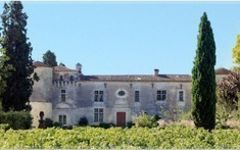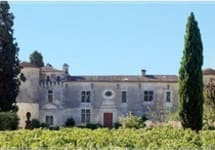Chateau de Carles 2019
-
James
Suckling



Product Details
Your Rating
Somm Note
Winemaker Notes
Professional Ratings
-
James Suckling
Lots of plum skin and spice with hints of subtle oak and dried flowers on the nose. Stones, too. Full-bodied with chewy, rich tannins that flow across the palate, making it a real mouthful. Sweet fruit at the end. This needs time to soften and come together. Traditional in style. Drink after 2024.
Other Vintages
2022-
James
Suckling
-
Jeb
Dunnuck
-
James
Suckling - Decanter
-
James
Suckling - Decanter
-
James
Suckling -
Robert
Parker
-
Wine
Spectator
-
Wine
Spectator


They have brought back to life the property's majesty and lustre of yesteryear and now produce there one of the finest Bordeaux wines, looking ahead to the day when they will be able to pass it on, in turn, to their daughters Eleonore and Oriane.
Since 2007, he has benefited from the expertise of Jean-Luc Thunevin and Doctor Alain Reynaud, legendary figures in the Libourne region, and took on board Jean-Philippe Fort, rising oenology star at Michel Rolland’s Wine Consultancy.

One of the world’s most classic and popular styles of red wine, Bordeaux-inspired blends have spread from their homeland in France to nearly every corner of the New World. Typically based on either Cabernet Sauvignon or Merlot and supported by Cabernet Franc, Malbec and Petit Verdot, the best of these are densely hued, fragrant, full of fruit and boast a structure that begs for cellar time. Somm Secret—Blends from Bordeaux are generally earthier compared to those from the New World, which tend to be fruit-dominant.

Home of the very first remarkable Right Bank wines, dating back to the 1730s, Fronsac and Canon-Fronsac actually retained more fame than Pomerol well into the 19th century. Today these wines represent some of Bordeaux’s best hidden gems.
Fronsac is a very small region at an unusually high elevation compared to other Bordeaux appellations. Its vineyards unroll along the oak-dotted hills bordering the river’s edge, making it perhaps Bordeaux’s prettiest and most majestic countryside.
Merlot covers 60% of the vineyard acreage; the rest of the vines are Cabernet Franc and Cabernet Sauvignon. The Fronsac and Canon-Fronsac appellations are limited to the higher land where soils are predominantly limestone and sandstone. Lower vineyards along the Dordogne River mainly qualify for Bordeaux AOC status
The best Fronsac are deeply concentrated in ripe red and black berry; they have a solid mineral backbone and are rich and plush on the finish.
